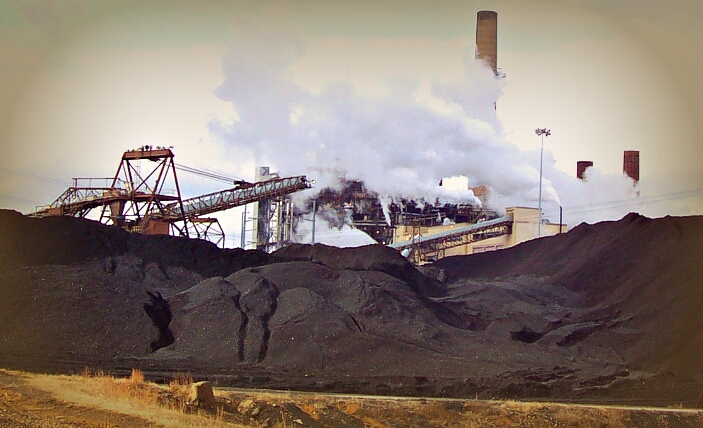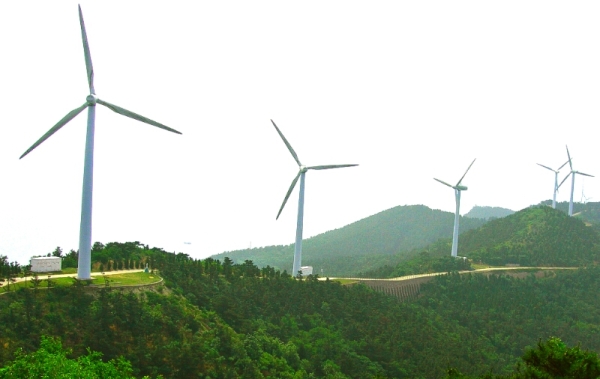Old King Coal is in the Winter of his years, and the question is no longer “if,” but “when” he will expire. 2014 is likely to be remembered as the death blow which truly left old King Coal, “a dead man walking.” To put it mildly, this was not a good year for coal.
“Coal is a dead man walking,” announced Kevin Parker in 2011. The head of asset management at Deutsche Bank, Parker read the forecast and declared the coming reality. “Banks won’t finance them. Insurance companies won’t insure them. The EPA is coming after them … And the economics to make it clean don’t work.”
Then New York Mayor Michael Bloomberg stated the arrival of this reality last year. “Here in the U.S., I’m happy to say, the king is dead. Coal is a dead man walking.” Bloomberg reiterated, “Even though the coal industry doesn’t totally know it yet or is ready to admit it, its day is done.”
More EPA Climate Action is in the Works
With older coal plants retiring in coming years, and the Environmental Protection Agency plan to impose carbon limits on existing coal-fired power plants, the future of coal is grim. Adding to this the recently announced U.S.-China agreement to dramatically reduce carbon emissions, the dwindling prospects for exports to Asia, and falling stock prices for many of the coal industry’s giants, U.S. coal has very little to look forward to in the coming new year.
EPA’s 2013 announcement to cut carbon pollution from new power plants was followed up in June of this year with a proposal to cut carbon pollution from existing electric power plants by 30 percent from the levels released in 2005. The existing facilities are the largest U.S. source of fossil fuel emissions, emitting about 33 percent of our total CO2.
More States Setting Self-Regulating Climate Goals
Although Congressional Republicans have vowed to use their new majority rule in Congress to block the EPA plans, U.S. Governors may have a stronger say in the matter. The EPA plan sets specific reduction goals for the 50 states, and allows for considerable flexibility on how states can achieve their goals. The well-formed and proactive coalition of U.S. governors has not indebted itself to Congress in the past, and state-based climate action is growing annually.
Additionally, the Supreme Court upheld another key EPA tool for fighting air pollution in April of this year. The “Cross-State Air Pollution Rules” (CSAPR), further underscores the untenable business of generating filthy dirty, carbon-polluted air to produce undesirable coal-fired electricity.
More Coal-Fired Power Plants Reaching Retirement Age
Reduced electricity demand due to conservation and efficiency efforts, as well as the decreasing price of natural gas, are combining to accelerate the speed of coal-fired electric power plant retirements.
In 2012, there were 1,308 coal-fired power plants in the U.S., with 310 gigawatts of capacity. In 2012 alone,10.2 gigawatts of coal-fired capacity was retired. The U.S. Energy Information Administration (EIA) projected this year that a total of 60 gigawatts of coal-fired energy capacity would retire by 2020, with the bulk of that coming by 2016.
According to EIA projections, the 2016 implementation of another EPA rule cutting emissions of mercury and air toxics will spur that increase in near-term coal plant retirements. Export of U.S. coal is not faring any better than domestic usage, either.
More Domestic Pressure on Federally-Owned Coal
Filed recently in U.S. District Court in Washington, DC, a lawsuit seeking to impact U.S. coal production has been financed by the Paul G. Allen Family Foundation, Friends of the Earth, and the Western Organization of Resource Councils. They are seeking a ruling to force the Bureau of Land Management (BLM) to conduct a full review to update the U.S. coal program’s environmental impact, including its effects on climate change.
This lawsuit effectively serves notice to the Obama administration that the fight against the BLM’s continued aggressive leasing of federally-owned coal from the Powder River Basin in Wyoming and Montana is heating up. The Powder River Basin is the source of about 40 percent of U.S. coal production.
Co-founder of Microsoft, billionaire Paul Allen charges the Obama administration with glaring hypocrisy. Writing in a Huffington Post article, Allen stated, “We have no comprehensive understanding of air pollution and climate impact of the federal coal-leasing program because the Bureau of Land Management has failed to analyze the available data for more than three decades.” He underlines, “The leasing of coal from federal lands undermines President Obama’s climate policy goals.”
More Cancellations of Proposed Coal Export Terminals
Pressure from within to stop, and lack of pressure to continue from without, is having an atrophic effect on coal exportation. Several proposed new export facilities in the Gulf Coast region have been cancelled or put on hold. With Oregon regulators announcing in June that they are denying a permit for a proposed Ambre Energy terminal on the Columbia River, four of the six proposed export facilities in Washington and Oregon have also been cancelled or are now questionable.
Ambre Energy, after its permit was denied in Oregon and its trouble with another coal export terminal proposal in Washington State, sold its U.S. holdings in mining and terminal projects to a Colorado-based private equity firm. Activists opposed to the construction of coal terminals in the Northwest say this is clear proof that the ambitious export dreams of U.S. coal producers have become “a financial train wreck going nowhere.”
More Improvments in Emissions Reduction Goals
Tinting activist dreams in blossoming shades of triumph, however, 2014 is coming to a close with the celebrated U.S.-China climate deal agreed upon last month during President Obama’s visit to China. He and China’s president Xi Jinping jointly announced they are cutting national greenhouse gas emissions. The U.S. has pledged to cut emissions 26 – 28 percent below 2005 levels by 2025, a substantial improvement over the earlier U.S. target set at reducing 17 percent below 2005 levels by 2020.
For its part, China has agreed to reach peak carbon emissions in 2030. By that time, as well, China agrees to be generating 20 percent of its energy supply from non fossil fuel sources. In order to meet that goal, China needs an additional 800 to 1,000 gigawatts of zero-carbon energy in place by 2030. This is a truly inspiring goal, as it represents a similar amount of the total energy now being generated by the U.S. from all sources.
More Coal Exporters will be Left Holding the Bag
Now combine the new U.S.-China agreement with one more important factor. Efforts to modernize its domestic coal industry has influenced China to reinstate import taxes on some foreign coal exporters. Analysts are recognizing the obvious consequences of China’s ambitious national goals: Clearly, nations that export their coal to China will soon be left holding the bag.
Old King Coal is already fretting, and with good reason. According to the EIA, U.S. coal exports for this year are expected to be around 19 percent below 2013. It had been hoped by the industry that coal exports would offset the domestic market slump, but China’s recent moves are dashing these hopes.
Need More Testimony?
Further discouraging news for old King Coal’s croneys arrived recently via Citi, Goldman Sachs, and Morningstar. Their analyses state that China’s demand for imported coal has peaked. International prices for seaborne thermal coal has fallen significantly in the past few years, and the financial powerhouses believe that prices are unlikely to recover.
Coal may be keeping some of us warm right now in the winter, but the earth is already swinging on its axis. Times are changing, and old King Coal is in the winter of his years. A new, renewable King is rising with the changing season. There’s a nice breeze blowing up from behind, and soon the sun is really going to shine.
(News source: ThinkProgress.org)





